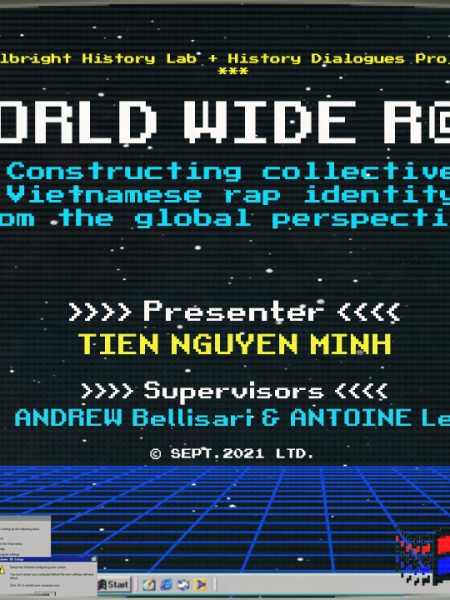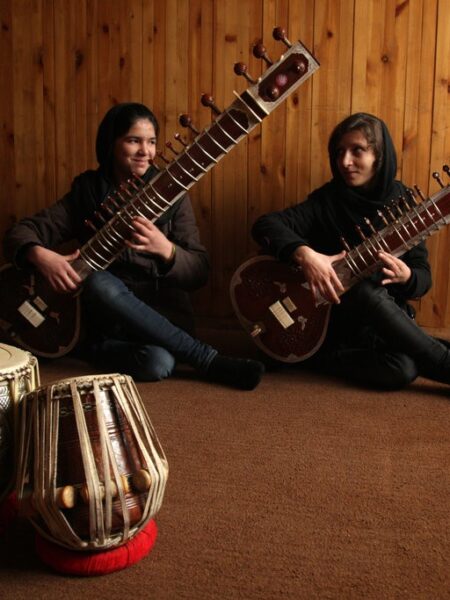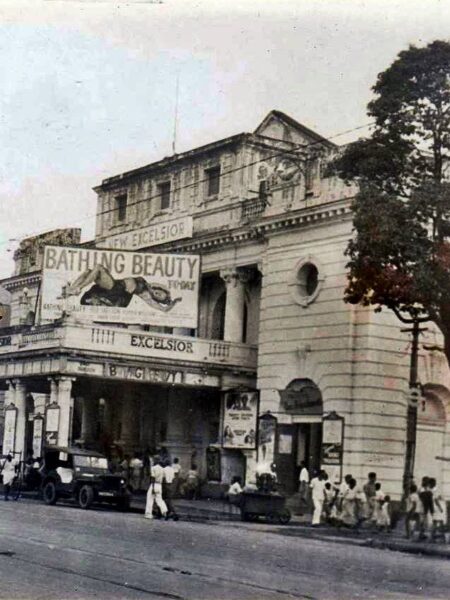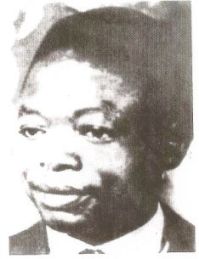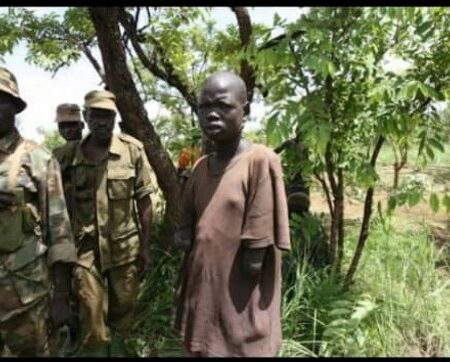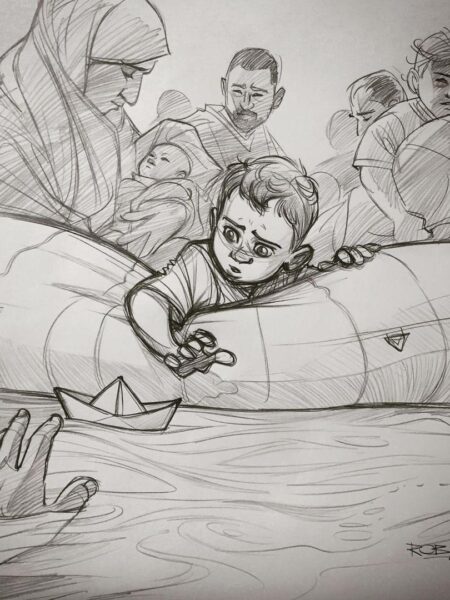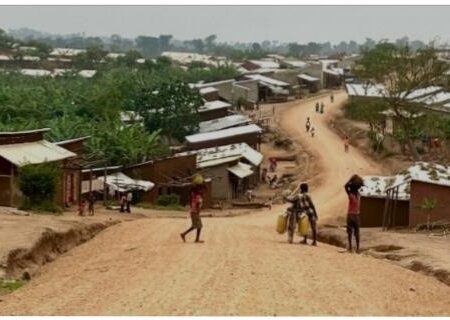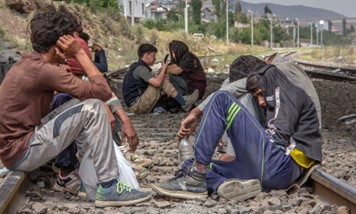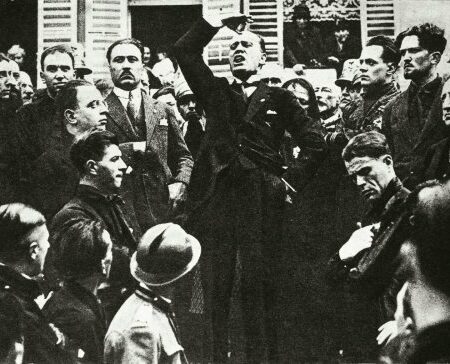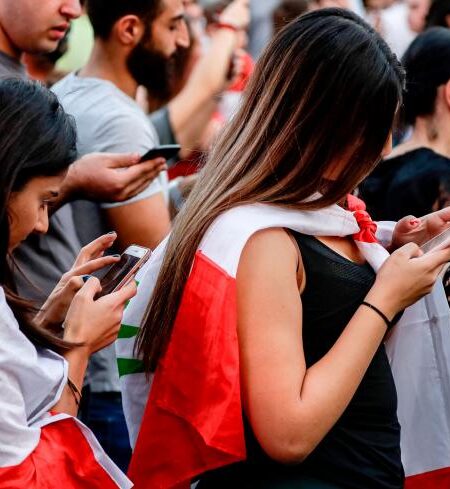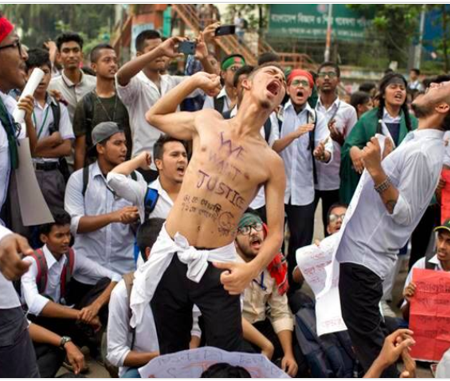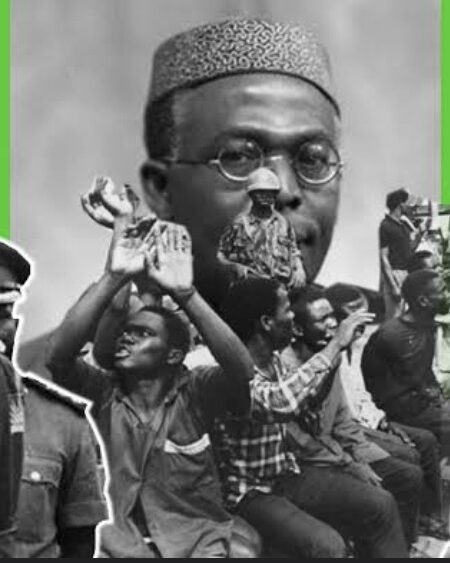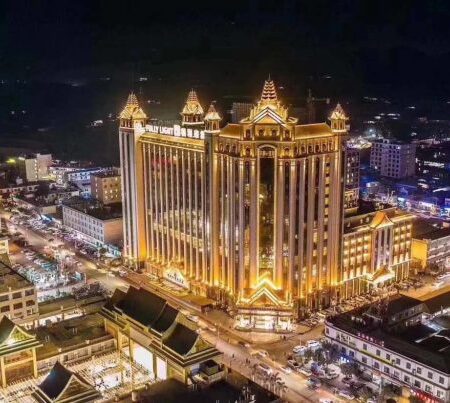“I feel like my nation is, right now, becoming something of an illusion. But I always identified with… I always felt as belonging to my nation.”
“Imagine if each Lebanese person has so many layers to their identity, imagine what Lebanon as a whole would make, as layers. There are so many layers, and so many things to take into account. You don’t really know if it’s a nation anymore or not. For me, you stand in front of Lebanon like that and you have an idea of Lebanon that is proper to you. And the person next to you has an idea of Lebanon that is proper to them. That is when it becomes kind of an illusion.” A.
“Of course, it is a nation. The definition of a nation is one people, linked by an ensemble of culture, history and language, and that is Lebanon: if you ask any Lebanese, they cannot say they are anything but Lebanese”. B.
Lebanon; both an “illusion” for A. and a certitude for B, an “idea” for A, “one people” for B, “a simple name given to this piece of land in the Middle-East” for A, and nonetheless their country, something they feel deeply attached to.
It is following the Paris Peace Conference of 1919 that Lebanon came to life as a state under French mandate, proclaimed as the “Etat du Grand Liban” by French general Henri Gouraud, along with new neighboring states, some under British administration, but all, like Lebanon, born from the ashes of the Ottoman Empire. As the main principle of World War I peace treaties, the idea of nationality played a central role in the reorganization of the fallen Empires. It is as such that Poland, Hungary, or Czechoslovakia came to be independent countries, and that millions of individuals underwent displacement, bending to this principle of border-building. The case of the Middle East was, however, slightly different; the new states’ borders, established by the Sikes-Picot Treaty and finalized at the San Remo conference, did not match the existing Arab nationalism, and instead of one Arab Kingdom, as promised by Great-Britain to the nationalists, followed the borders of ancient Ottoman administrative units. Syria, the Greater Lebanon, Iraq, Transjordan, Palestine, and the Hejaz Kingdom were born. Among them, Lebanon had its own particularism: as a formerly autonomous governorate of the Ottoman Empire, intellectuals had developed a Lebanist discourse which differentiated Lebanon from the rest of the Arab world; nevertheless, Lebanon had also been at the center of the development of Arabism and early Arab nationalism: it had now to deal with this duality; what would legitimate, as ones could argue at the time, its separation from a Greater Syria? Or from a larger “qawmiyya arabiya”, an “Arab nation”? Put on the path of independence under the French Mandate, from an Ottoman administrative unit, Lebanon had to become a nation and a state. While the model of the nation-state was by then becoming prevalent in Europe, it would soon propagate, or so to speak, to the rest of the world, as the colonies became independent one after the other. As it can seem, at first sight, that the concept of nation was forcefully put in place in these emergent states, its relevance in the case of Lebanon must be questioned. What became of it, and how did a Lebanese identity shape itself? The other issue that appears when studying the Lebanese case is its peculiarly important diaspora, as the country never really stopped to supply successive emigration waves, throughout the different wars and crises that struck Lebanon. Most found new homes in Latin and North America, in Europe and Australia, experiencing new models, and encountering alterity, while still showing strong attachment to Lebanon. How did this dynamic influence the works on identity?

First, as large as it can be, the notion of “nation” has to be defined. In eighteenth and nineteenth-century Europe, and even to the early twentieth century, emotional definitions of the nation, or “subjective” ones as Eric Hobsbawm calls them[1], could point out a sacred dimension: Sieyès defined it as the “origin of all”[2], and Renan thought of nation as a “spiritual principle” and a “soul”[3], something of a social contract. But more aspects of the nation were then defined as the second part of the twentieth century flourished with work on nations and nationalism. Ernest Gellner, for instance, differentiates between “nations as a natural, God-given way of classifying men”[4], which are a “myth”, and the process of “nationalism”, which constructs nations, from an existing culture or not. In a sense, the emotional definitions have something of ideologies: they were mobilized as a tool to construct an identity, as inherent parts of a belief system, nations becoming the object of a transfer of sacrality. In the case of Lebanon, as we will be examining narratives, the ways to narrate identity, we will try to look at the myths mobilized from above to construct a state and a nation, with all the difficulties it can imply in a state where the structures of identity are deeply fragmented. However, this point of view taken “from above”, the expression supposing the presence of an acting state and elites in the making of a nation, cannot stand on its own, and must be conjugated with a perspective “from below”. This is not to establish a neat and definitive distinction between what would be “the state”, and “the civil society”, as both are closely linked in Lebanon. If Hobsbawm recognizes the difficulty of apprehending this “view from below”, looking at the place of individuals in the identity discourses in Lebanon can help assess it; as such, studying artistic production, initiatives from the civil society, and individual voices on the social media, we will try to grasp various aspects of the Lebanese identity as it was shaped since the independence. Indeed, starting from 1943 seems an interesting date, in that this year marks, as we will see it, a turning point in identity politics, as the state started to progressively loosen its grip on the narratives of the nation. To what extent did a “nation” and a Lebanese identity mold themselves independently of the state? Although the latter did play a role in the articulation of identification symbols toward the “idea” of Lebanon, it remained quite distant from national construction, both as a myth and a practice. Indeed, the relegitimation of confessional identities as factors of power had consequences on the production of unified historical narratives, and produced a dichotomy between the idea of a unified Lebanese nation, and a political practice where nation had in fact little room (I). It is filling the gaps left behind by the state that the civil society, in plural ways and discourses, took over the construction of its own identity, and of a Lebanese nation, a nation that is lived on a day-to-day basis. This construction was strongly channeled by a prolific artistic production coming from both the mainland and the diaspora, but also by social media, which became an important tool of imagination, attracting Lebanese from everywhere in a common concern about a shared practice of “Lebanity”, and around the wish to build a future for the country. We will see that the mainland and the diaspora participated jointly in this effort, as the two arms of the living organism that is Lebanon (II).
About methods
In the making of this research, two interviews were conducted, following oral history methods. I have chosen to make them anonymous, and change the interviewees’ names to allow, as much as possible, room for freedom of speech, and to let interviewees express their views on how they lived their Lebanese identity. I first asked them to introduce themselves, and to paint their identity as one would make a portrait: what aspect of their identity mattered to them the most? Did they identify with Lebanon? What were the other categories they related to? Then, other questions dealt with their link to Lebanon’s history and memory, as these seem to be important factors of national identification, and with their view on the recent events that shook the Lebanese political scene. Finally, some general questions tried to unveil what they thought of Lebanon as an identity reference: was it a nation? Could it be one when the temptation to leave affected many? The first interview was thus conducted with A., a Lebanese student who comes from South Lebanon, and studies in Beirut. The second one featured B., a Lebanese student from North Lebanon, who came to France to pursue his curriculum. Their different experiences, as one is from the diaspora (B.) and one is not (A.), and confessional background will help us assess the similarities and contrasts in the way they live their identity, and imagine their belonging to their country. This way, it will be possible to reflect on the impact of emigration on the construction of national identity. In addition to these, I studied many posts on the Reddit subpage “r/Lebanon”, and answers to questions I asked there about the existence of a Lebanese nation. Reddit enables to discuss publicly specific topics regarding a general theme (here Lebanon). As such, it is an interesting example to explore, in order to understand what matters are at the center of preoccupations for Lebanese people. Even though it is difficult to determine this with precision, it seems that the forum gathers both members from the diaspora, and from Lebanon. Here again, this variety will be of interest when examining the links of the diaspora to the Lebanese identity. Of course, these materials cannot speak for a majority of the population. They do, however, give enlightening insights of how identity and history are lived every day, how they are thought of by individuals.
Acknowledgments
I would like to thank Johanna Gautier-Morin and May Tamimova for the precious advice they have given me. Special thanks also to my interviewees for the time they dedicated to this project.
I. The distant state
A. Existing structures of identity
When Lebanon became independent in 1944 as the Lebanese Republic, following the unwritten National Pact, no peculiar change was marked from the French Mandate in the way the state handled identity. If it is true that some distance was taken from the French era, by changing the flag, for instance, most of the structures of identity construction remained as they were in the pre-independence times. Religion for example, was re-legitimized at the center of politics by the National Pact; yet this was already the case as of the nineteenth century, when in 1843, ensuing the intervention of France and Great Britain in the politics of the Ottoman Empire, two Kaymacamates, one Christian and one Druze, were established in Mount Lebanon[5]. Moreover, religions were made relevant in the political sphere when Mount Lebanon became an autonomous governorate, as the 1861 Règlement organique allocated political charges according to religious belonging[6]. The National Pact of 1943 only maintained this continuity by making religious identity matter as well in the new republic.
As for the narratives of a proper Lebanese identity, it seems interesting to dwell on the position of the state on history. Indeed, the historical discourse appeared to be a tool in the formation of many states, notably when it came to the ideological formation of a “nation”, as a myth to legitimate the political power: it was the case in Third Republic France, or Italy in the late nineteenth century. Back then, history became relevant in schools, as part of the “nationalization of the masses”. In Lebanon, the mandatory authorities, supporting local intellectuals, did not wait for the independence of the country to propose a take on its history. The Lebanese school system had inherited Ottoman schools as well as missionary and secular schools founded by western powers. Among them, the Jesuit institutions had adopted history textbooks that promoted the Lebanist discourse of Phoenician origins, theoretically separating Lebanon from an Arab identity. When came the time of the French Mandate, this discourse was the one which was selected as the official one in public schools, as textbooks were mandated to Jesuits by the authorities, and as the National Museum and the Direction of Antiquities brought forward the Phoenician heritage[7]. Adopting an official narrative did not mean, nonetheless, that it permitted a consolidation of political and imagined ties of the populations in Lebanon: the constitution of 1926 guarantees the freedom of education, and the “rights of communities to establish their own private schools”[8]. It therefore allows the coexistence of concurrent narratives of the Lebanese history; indeed, if the phoenicianist discourse was made prevalent by state elites, it appears that Christians related to this narrative more than Muslims did, many of whom identified with an Arab identity[9], or promoted a union with Syria in a greater state. In his book A house of many mansions, Lebanese historian Kamal Salibi mentions a battle of history textbooks in 1935 which ensued when a textbook linking Lebanon to Arab Syria was published by two teachers of a Sunnite school in Beirut, to challenge the dominant Lebanist historiography. Afterwards, the government tried to answer back with the publication of a new series of Lebanist textbooks, but it failed to impose their adoption in schools because the project was strongly opposed, as the historical discourse it promoted was denounced as too partial and incorrect[10].
Thus, we can see that competing narratives already coexisted before the independence, despite the state’s intervention in the matter. After the independence, these structures of education remained very similar: the state continued with a Phoenicia-oriented history in the reforms of the national curriculum in 1946 and 1968[11], private schools kept their autonomy, and history became an object of communitarian polarization. Adding to this the plurality of myths that coexisted among these narratives: the myth of antique Phoenician heritage, the Arab origins of Phoenicians, the myth of Lebanon as a refuge, or the myth of harmonious coexistence between communities. For one Lebanon, there were hence several histories, and numerous myths.
However, if the pre-independence historical narratives were not unified by the now independent state, something kept its integrity: national symbols – the flag, the national anthem of 1927, and the Cedar of Lebanon – were mobilized beyond the grasp of any sectarian instrumentalization: all Lebanese could relate to them. Did this set of symbols favor the emergence of a unified community?
B. Heimat or Nation
Symbols contributed to foster a link between people who would imagine themselves as Lebanese. This is not, nevertheless, in the sense of a Lebanese nation; rather, being “Lebanese” refers here to an emotional belonging, that of the fatherland, the Heimat, which is to be distinguished from the idea of nation. Indeed, the notion of fatherland – or homeland, motherland, Heimat, pertains to a geographical dimension: it appeals to a cherished land, the earth, a specific territory, placed in an eternal temporality. The prefixes “father”, “mother” and “home” – or “Heim” – do tell a lot about this sentimental aspect of the concept. This vision is very present in the symbols deployed by the Lebanese state: what is more evocative of a fecund land than the Cedar of Lebanon, an emblem of the country, present at the center of the flag? The same applies to the myth of the mountain as a refuge; as for the national anthem, it also carries this conception: in the chorus, “All of us! For our country, for glory and the flag! All of us! For our country!”, the word “country” is actually used here as the translation of Watan, an Arabic word often translated as “nation”, but whose meaning is closer to that of the word “fatherland”. Indeed, the etymological roots of the word link to the ideas of home and land. And this feature can be found in the anthem, under the mentions of “mountains”, “valleys”, “the end of times”, “her land and sea”, “since time began”, “The cedars”, and “her immortality”.
While the “nation” also has this emotional, geographic facet, it does not suffice. There is a strong political dimension to the idea of nation, which is not necessarily present when we think of a Heimat. In his essay Imagined Communities, Benedict Anderson defined the nation, “in an anthropological spirit”, as “an imagined political community – and imagined as both inherently limited and sovereign”[12]. The references to the eternal land and its characteristics play indeed a role in the imagination of Lebanon, in the way defined by Anderson, which lets the members of this community, without knowing each other, be conscious of their common identity. This is what appears in the discourse of one of my interviewees, who is from the mainland, when she answers to the question “What links you to a Lebanese from another region?”:
“Also what links me to them is the motherland, for sure; I feel the layers always play a huge role, so when I see another person, let’s say I am in “Jnoub”, which is the South, and I meet someone from the very North, the first thing that connects me with them is our language and then our motherland, maybe we will speak about how beautiful Lebanon is, have you been here, have you been there, it is something that really connects us”. A.
Being from the mainland, this link to the Lebanese land is a reality she experiences every day. However, this identification is more emotional than political. It is in that regard that these symbols do not suffice to the invention of a nation: behind them, the ambition of the state was to legitimate its independence, by referring to an ancestral legitimacy of the land, a fundamentally Lebanese land, from other levels of belonging, namely the Greater Syria or the larger panarabism. But how could the sole use of symbols build a nation-state, a “sovereign political community” to use Anderson’s words, without the proof in practice that a life together was possible, without a sense of unity in other domains? Outside from the set of symbols, outside this emotional link, the political life was very fragmented between confessional groups. Even political parties failed to assemble in a cross-confessional way after the independence, or to appeal to the Lebanese as a unified community, as a nation, and those who succeeded had too little weight to have much influence on the political construction of the nation[13]. We also saw earlier that historical narratives from the pre-independence times, which were rather divided, were not dealt with in order to provide a coherent history of Lebanon. All these elements of fragmentation in the identity of Lebanon did not support the emergence of a unified discourse.
This is all the more visible when considering the silence of the state on its post-independence history, which gives evidence of its relative disengagement regarding the national construction in Lebanon.
C. Let us not talk about history
Indeed, the state did not take the opportunity to develop a narrative of its post-independence history. Ever since the independence in 1943, and up to this day, no narrative of the post-independence days can be found in history schoolbooks. One interviewee, B., who studied in a French school, but followed the National history curriculum until the exam of the Brevet, explains the part of Lebanon’s history he was taught:
« We studied the part that comes a little before [the Civil War]; in fact, at school, we exactly got to the independence. This is where history classes stop in Lebanon ». B.
And indeed, textbooks stop at the year 1946, when the last French soldiers left the Lebanese soil. It can seem curious when the master by the state of historical narratives proved a strong tool of national construction in countries that became independent at the same time as Lebanon. Indonesia, for instance, which proclaimed its independence in 1945, and went through a fierce war with its former colonizer, the Netherlands, made history the channel of Indonesian nationalism. All comparisons of course have their limits: Indonesia was a Dutch colony since 1800, and had been controlled by the Dutch East India Company since the seventeenth century, whereas Lebanon had been a French mandate, not a colony, for no more than twenty-three years; Indonesia had also gone through war with the Netherlands, which was not the case for Lebanon, even though there had been tensions with French authorities. Furthermore, Indonesia has a great diversity of languages, while the Lebanese population speaks Arabic. But like Lebanon, Indonesia had a very diverse population, which had several religions and cultures . And from a Dutch administrative unit, it had to build an independent nation-state. History precisely played a role in it: all along the second half of the twentieth century, a unified national curriculum was put in place, and the state also developed a narrative to its post-independence history; for instance, the 1982 edition of the SNI textbooks, which were mandated by the New Order state, covers through several volumes the history of Indonesia. In the volume about recent history, the periods go from the Japanese occupation (1942-1945) to the New Order (1966- 1990’s)[14], the latter period being still ongoing when the textbook was released.
In Lebanon, official history was soon marked by the silence of the state. The post-independence governments, at least until Camille Chamoun’s presidency (1952-1958), continued to align with a Lebanist and phoenicianist discourse in the official textbooks, as well as in the state-sponsored historical publications: the Direction of Antiquities and the National museum, created under the French Mandate, thus continued to publish Lebanist-oriented historical works[15]. This could be explained by the fact that after the independence, the politicians and administrative officials were not substantially renewed, but also by Camille Chamoun’s alignment with the West in the Cold War context, and his opposition to Nasser’s panarabism. However, with President Fuad Shihab coming to power, and following the short civil-war of 1958, which opposed the supporters of Nasserist panarabism who wished Lebanon had joined the United Arab Republic along with Egypt and Syria, to the defenders of Lebanon’s independence, the state entered a phase of “historiographical silence”[16] as C. Raymond calls it. The latter was encouraged by a will to avoid communitarian conflict in the aftermath of the short civil war, and to attract back to the Lebanese state those who were tempted by panarabism: the Direction of Antiquities stopped its historical publications, and the official Lebanist discourse lost ground[17]. This silence concerned the pre-independence history narratives; but more generally, and pushed by the same concerns of preserving the peace between communities, the state did not develop post-independence history either: between the Arab-Israeli wars which were very controversial in Lebanon, and the 1958 war, it chose not to relate it to assure its survival. It is even more blatant when seeing how to this day, not a single word is said about the Civil War of 1975-1990 which tore the country, be it in history books or more largely in the public space.
Eventually, when we look at the intervention of the state, through all its different incarnations, in the identity discourses, it was a series of rare, unsuccessful attempts to call to unity. From the mandate to the short 1958 war, the official phoenicianist discourse failed to impose itself, and competed with other incompatible narratives. Although the National Pact of 1943 declared the neutrality of the Arab identity of Lebanon, meaning Lebanon would be considered Arab, if the supporters of panarabism would renounce joining another Arab state, it did not provide results as the 1958 war happened in spite of it. Then after 1958, the shihabist state took a step back by entering into silence about its history and even its existence and presence as a state, even though it was a period of prosperity and construction in Lebanon[18]. After the Civil War, the Taif Agreement recognized Lebanon as “Arab in belonging and identity”[19], and reminded of its membership in the Arab League. It even announced an education reform in the following terms:
“3. Private education shall be protected and state control over private schools and textbooks shall be strengthened” (…)
“5. The curricula shall be reviewed and developed in a manner that strengthens national belonging, fusion, spiritual and cultural openness, and that unifies textbooks on the subject of history and national education”.[20]
Neither of these last two statements was realized: reforms of the curricula to publish unified history textbooks were issued in 1991 and 1996, but both failed, the second one at the last moment, retracting the first unified printed textbooks[21]. The declarations of Lebanon’s Arab identity remained a series of words on treaties, a theoretical definition for the Lebanese identity, very far from reality, from a practice of the nation. And as the Civil War resulted in an even more fragmented society, and in community-led institutions, the choice of silence on recent events was not to help consolidate a Lebanese nation. Indeed, the War ended with an Amnesty law in 1991, choosing to forget what had brought the country down, choosing amnesia over history. The post-Civil War period mainly sought to maintain this status quo, never bringing up delicate identity issues. We can thus see there how each period saw the “state” disengage further of promoting an official historical discourse. Successively torn by its foundational ideological conflict between arabness and Lebanese specificity, and then between geopolitical Cold war interests, and having chosen to maintain and relegitimate a confessional equilibrium as a pillar to its power and to foreign states’ influence, it chose to forget, and move forward as if nothing had happened. If Renan asserted that “Getting its history wrong is part of being a nation”[22], this is to build a fictive nation. What about making a nation in the sense of making society? If a nation can allow itself to get ancient history wrong for the benefits of the myth and favor the imagination of a political community, is it also the case for recent history, which weighs on all minds, especially when it is as violent as a civil war? Today, as the Lebanese people are marching on the streets to build a new project for their country, students are demanding reforms of history curricula to include Lebanon’s recent history, as a path toward reconciliation and more national unity[23].
Ultimately, the state failed to elaborate a strong discourse, or a coherent narrative on the Lebanese identity, except from some shy, often unsuccessful attempts, which were disconnected from Lebanon’s reality in certain cases. If Lebanon grew as a state, developed infrastructures, at least until the Civil War, and tried to build a joining point between communities, it is a country that officially disengaged from telling its history, allowing the development of contradictory narratives, and silencing the sensitive parts, which leaves some questions unanswered.
In the conclusive chapter of his essay, Benedict Anderson reflects on what he calls “The biography of nations”; from the observation that “All profound changes in consciousness, by their very nature, bring with them characteristic amnesias”, he develops a comparison between human beings and nations: as we grow up, we forget. How to know that I am the same person as the baby pictured in the photo, if I do not remember being a baby? “Out of this estrangement comes a conception of personhood, identity (yes, you and that naked baby are identical) which, because it cannot be ‘remembered,’ must be narrated. (…) As with modern persons, so it is with nations”[24]. How to conceive such an identity when these very narratives are fragmented and incoherent, and when an important part of it is silenced? Does a nation that renounces to tell its story cease to exist? Does it condemn its future? These are the questions the disengagement of the state invites to think of, and that we will try to explore by looking at the emergence of other actors to fill the gaps left in identity discourses.
II. Art, memory and the individual: the Vibrant Nation
It appears that the gaps left by the state apparatus in the Lebanese narratives did not remain unfilled; in the absence of the state, the civil society took over the construction of its own identity and of a Lebanese nation. Had the successive governments not progressively disengaged from the construction of a Lebanese national identity, our hypothesis is that the civil society might have had promoted different discourses, in order to claim recognition for the untold ones. Therefore, the narratives promoted by the civil society took this particular direction in reaction to the state’s distance. What we mean here by ‘civil society’ englobes several non-state actors, be it NGOs, associations, or groups of civilians, who seek recognition for themselves or others, and defend their existence in the political sphere; but more specifically, it is the role of individuals which we would like to assess in this process.
A. Taking over history and memory
First, the civil society and individuals acted to take charge of the history(ies) and memory(ies) of Lebanon’s past. Despite the state’s endeavor to silence the recent history of the country, past events still had had a strong meaning for the Lebanese people. The recent past, and a fortiori the Civil War, weighs on all spirits for anyone who has personally lived it or their children to whom they transmitted their memories, their pain, their experience. Despite the utter absence of the period in history textbooks and in the public space, it is present in silence. B. explained, for instance, that his first source regarding the conflict “would be what [they] heard in the family about the Civil War”. As for A, she sums up this weight of Lebanon’s past in this formula:
“Maybe when we learn too much about history, we get to the point where we cannot really move forward, because we get so attached to past events”. A.
This problematic past was therefore handled from below, to answer an urgent need to make sense out of these ambiguous, holed identity narratives.
1. Through civil society initiatives
Civil society initiatives may be the most visible among the attempts of the society itself to take over Lebanese history and memory. The work of the Umam NGO is quite significant in this regard. Founded in 2005, this organization has decided to tackle Lebanon’s “historical question” as an urgent need, essential to build solid foundations for the future of the Lebanese society. Calling the country’s difficult past “an inhibitor on the path towards peace and prosperity”, the NGO concludes that “If Lebanon is to realize a stability anchored by real and inclusive political life, a discarding of legacy alliances, and the absence of inherited or imposed taboos, then a reckoning of the country’s difficult history is imperative”[25]. As such, they undertook the project of creating a citizen resource center to gather archives and various documents about the Civil War; with time, they made the resources available on the internet, worked with historians, and organized conferences, debates, or even film projections on Lebanon’s past. By doing this, they made dealing with history and memory their priority, to dig out the tormented past of the country in a similar way to the works on reconciliation in post-civil war societies. This contributes to building identity by opening a discussion on the past and permitting historical reflection on what characterizes Lebanon.
Other attempts to deal with the past lie in initiatives led by groups of civilians themselves, as one could see during the past year when commemorations of the Beirut Port Blast were regularly held. Citizens spontaneously organized these, often through social media, which attests the importance of remembering the past in the construction of national identity: by commemorating, citizens choose what part of their past is relevant to them, even when the past is as recent as the Beirut port explosion, and what part of their past they want to mark as essential for their identity. Of course, other discourses are entangled in this quest for identity: the yearning for justice and more security for instance. Nevertheless, it also tells something of a sense of “Lebaneseness”, an attachment to the idea of having a future in this country, as a nation working on its identity.
2. Through artistic production
More specifically, individuals have played an eminent role in constructing a Lebanese identity from below, and this can notably be seen in artistic production. Why consider art? Because it is an innermost, intimate endeavor and has a profound meaning coming from an individual: it is an urgent matter and maybe shows best how history conquers the soul, how individuality embodies the notion of identity. Nowadays, especially with the acceleration of communications, art is becoming more and more accessible, making it a prime example to study its link to national identity, as it can become a trigger to national imagination. Most of the examples which will be mentioned tackle the Civil War period because of its centrality in Lebanese history and memory, and propose individual narratives of historical events, be they fictive or real.
One interesting example of this process is Etel Adnan’s Sitt Marie-Rose. Her work is particular in that it dealt with its immediate history, as she wrote her poetic novel in the third year of the Civil War. It relates the tragic struggle of Marie-Rose Boulos, a Christian woman who took care of deaf-mute children stood up for the Palestinian cause during the war, and fought for the place of women in the Lebanese society. She was assassinated by members of Christian militias in 1978. In this artwork, Etel Adnan chooses to give her voice back to the one who was silenced: as a woman, as a Lebanese woman, as a Lebanese Christian woman, Sitt Marie Rose can stand up again and take her place in Lebanese history. By doing so, Etel Adnan not only challenges the existing narratives of Lebanon’s past, often made by men and portraying men at their center; not only does she question the identity of history’s protagonists, and brings light to the womanly side of Lebanon, but she more importantly makes writing the cathartic expression of muted souls. Indeed, the narration, led by an unknown character, shatters when the Civil War breaks out at the end of the first part of the poem’s timeline[26]. The narrator being unable to tell the story further, other characters take it over and narrate their various points of view of the tragic execution. Thus, narration cannot be stopped and will continue until the story is told. Adnan’s poem therefore enlightens several aspects of the notions of identity and nation: first, on the importance of enunciating narratives in order to exist; second, on how art was made the channel of an individual take on Lebanon’s history and identity by proposing a unique narrative, and, this way, suggesting an answer to the question “What is Lebanon?”.
Other post-independent events that the state strove to silence inspired poets and plastic artists. Ghassan Salhab, director of the 1958 documentary, relates for example the eponymous events of 1958, the short civil war that tore Lebanon down between the supporters of panarabism and the partisans of Lebanon’s sovereignty. In this artwork, following methods close to oral history, Salhab gives a voice to several protagonists of Lebanon’s history, among which the central floor is given to his mother. 1958, the year of the civil war but also the year of his birth, is thus narrated from her individual perspective as a Lebanese who emigrated to Senegal. In the form of memories, her personal experience is described vibrantly: by portraying life as it was for Lebaneses in Senegal in 1958, and the political positions she sided with during the conflict, not only does she offer a historical testimony, but she also gives a glimpse of the manner she lived her Lebanese identity; indeed, she describes how she engaged in panarabist ideas ever since she was a child, and sensed a strong attachment to this supranational idea:
“We felt at this time that we were part of this Panarabism. (…) My opinion was that the Arab nationalism had taken shape in the time of Abdal Nasser. It was mere words, and it took shape when Nasser came into power in Egypt. We used to listen to his speeches and then all life would stop: We would listen to him. (…) At this time, in Senegal, I could catch Cairo’s radio, and I listened.”[27]
And as she continues her speech, we can see that several Lebanese identities live simultaneously within her:
“Also, when you are born into a certain environment, you are influenced by it, for sure. Be it the town in which you live, the school you attend, all of this has influence. We cannot say we will assemble all Arab nations in one and put one leader to rule on it. This would be difficult. These are empty slogans; they say a unique Arab nation, ok, we all speak Arabic, but to unify them? We already cannot agree on choosing a leader in a sole country: this one comes against it, that one opposes the idea… Poor Arab world.”[28]
Furthermore, in parallel to her speech, Ghassan Salhab superposes other levels of narratives: first, by letting other voices relate the way the conflict unfolded on the ground in Lebanon, and then by using archive images of the 1958 war. The use of these different takes on history and memory creates a living image of the events in the mind of the spectator, and invites to think of the day-to-day dimension of the Lebanese identity: how it was fragmented between torn, yet simultaneous identities, how it was felt even within the diaspora, in sum how it was lived by individuals. By delving into the interiority of memory and history, this artwork serves as a medium to the imagination of a certain Lebanese reality, and proposes a unique narrative that contributes to add meaning to the idea of Lebanon.
Coming back to the 1975 Civil war, another artist makes memory the main foundation of her work. In her graphic novels, Zeina Abirached, born in the last decade of the war, gives shape to her childhood memories of the war. In a black and white art style that stands, among other reasons, for the blurry state of souvenirs when they come to the mind, she relates the conflict as she lived it under the gaze of a child confronted with a reality that surpasses them.

In The Game of Swallows, for instance, she recounts an evening when her parents had gone out to visit relatives, and conflict broke out before they could come home. As she and her brother were concerned about their parents’ safety, their neighbors came one after the other to take shelter in the hall of their apartment, as usual, the only place safe from the bombs. Panel after panel, the reader follows the evening with the same apprehension as the characters, while seeing them cope with the situation, and live it through. The following abstract is peculiarly interesting in this regard: on the right, we can see the children eating fruits with their nanny, and playing with the peelings, while two of their neighbors play scrabble. On the left side, two women envision their future, as one of them plans to emigrate, and two other neighbors discuss the situation. Only two empty chairs stand for the missing relatives all are waiting for: the parents, who did not return yet. Rather than explicitly describing the violence of the conflict, the author suggests it by portraying the day-to-day life in the war, as a vibrant and lively memory; between the concern of the characters to outside events, and the necessity to keep living, this portrayal is very evocative of a certain way of life. In fact, many Lebanese families lived this way during the war, sheltered with their neighbors, watching their children play to forget their fear, and they can all relate to it. This is, therefore, a channel of national imagination, and in that sense, it contributes to building an idea of what Lebanon is, of what it means to be Lebanese.
All three examples of artistic productions we mentioned make history and memory their own, thus adding their touch to the definition of a Lebanese identity, and the very diverse, numerous dimensions hidden behind the notion of “nation”. If these three works are all at the border between fiction and reality, as is memory, both Ghassan Salhab’s and Zeina Abirached’s approaches have the specificity of staging a lived and living identity. Moreover, this allows us to delve further into the idea of a day-to-day nation. Even though narratives about the Lebanese identity remained very fragmented at the level of state and nation-building, there was, according to Kamal Salibi, a “practice of Lebanese nationality”, which was “ahead of the theory”[29]. By sharing a certain way of life, an “environment” which is influential, to quote the words of Ghassan Salhab’s mother again, a common experience, a day-to-day nation slowly took shape, taking its roots in life. This lets us think of the nation as more than an imagined community: it is also a practical one, and the practice and imagination both fuel each other and maintain their existence together, interdependently.
B. Edifying a tightly weaved web of existence and of life
“The first thing is the culture. Or sceneries, like when I hear the word [Lebanon], in my mind, there is these green sceneries, and the life here, it’s just so lively! And the food, the culture, that is the first thing that comes to my mind.” A.
Overall, it is a tightly weaved web of existence and life that was slowly edified by individual actors, all relating to a common experience of life. It seems indeed that a practice of the nation developed in Lebanon, a Lebanese way of life and a way for Lebanese to imagine themselves as part of the same ensemble, in both an emotional and political way. However, if art undoubtedly plays a role in molding the link between reality and imagination, as we saw it through the previous examples, it is far from being the sole power channel between them. Social media in particular appear, to a certain extent, as the cement to a form of Lebanese identity deeply anchored in life and reality.
1. The digital nation
Internet is no stranger to the dynamics of the national imagination. Linking people all day and all night long, it serves as a relay of information between them. Benedict Anderson already described print-capitalism as a channel of imagination for nations: reading the newspaper, for instance, linked all the readers to the same local information, to which they could relate: it was like a fictive plot all would follow to know the chain of events happening in the territorial unity in which they lived[30]; soon, they would speak of the local community of individuals they did not personally know as “us”. Internet, and more generally, the exponential development of communication technologies, considerably enhanced this phenomenon. In Lebanon, these developments followed the global trends, and Lebanese citizens from all generations progressively connected to the web. Two examples of social media could help appreciate this widely spread process in Lebanon.
First, WhatsApp, which was adopted early by Lebanese individuals due to its gratuity as opposed to the exorbitant costs of daily communications, became, and is still to this day, a transgenerational social connector in Lebanon. There, very large forward chains channel content shared by young and old regarding their society and the reality they live in. In the past two years, since the revolution, a new trend emerged in Lebanon: if memes were already very present on the Lebanese internet, they seldom tackled political issues; and with the revolution, political memes slowly became viral. People would moreover soon share satirical writings, to which many Lebanese would relate. It takes several forms on this social media; some can be very similar to the ones one can find in other countries; others are, on the other hand, very particular to Lebanon. It is the case for a content which was quite widely shared in summer of 2021, as the economic crisis reached new heights: in a short audio file, a lady chants Lebanese Zajal, a form of popular versified poetry, in a typical Lebanese dialect, sourly describing the evolutions of daily life with the political and economic crisis.
“The mother of seven children
Can’t have mere crumbs,
And her hair that needs a dye,
Is washed-out and all matted,
Under your Reign Abu el Mich[31]
The Lebanese who is proud,
Cares about’ sustaining his family.
Became unemployed,
Roaming in the streets to sell himself
Under your Reign Abu el Mich”
While portraying the new misery of the Lebanese people, she comes back on all the characteristics of what was an average Lebanese life, and what was put aside to survive the crisis: “We forgot the grilled Kafta[32], on the embers skewered”, “We forgot the crowded restaurants, we forgot the cups and the bottles”.By repeating the verbal group “We forgot”, the anaphora depicts a vibrant image of a bygone past; but even gone, it appeals to a memory that still subsists in the mind of the WhatsApp users, thus transmitting a sentiment of belonging to a certain way of life. This is a form of storytelling, a narrative coming from the people to chant their identity, an identity that is anchored into life. Indeed, this evocative poem sews together dissociated elements of shared experience, and links them through a coherent narrative (here the stories of the mother of seven children, and the Lebanese man trying to survive). Then comes the reception of the poem: to each Lebanese user who relates to it, be they from the diaspora or from Lebanon, the poem echoes with existing memories, and with a part of them. By conjugating this storytelling with its reception in the minds of Whatsapp users, an identity is created and shaped collectively. It is the same mechanism as the childhood photos described by Benedict Anderson, as we saw earlier: only through narration can the subject integrate a sense of identity, and know that them and the baby on the photo are the same person. In this sense, these contents shared through digital means are eminently political.
More significant even of this dynamic is Reddit, a forum-like platform where users gather around common interests to discuss them and share related content. In 2007, a page was created for Lebanon, which was not massively frequented until recently. Indeed, since the revolution, as can be seen on the curve below, the submission rate notably grew from eight thousand subscribers to more than sixty thousand in September 2021.

On this page, members publish various content concerning culture, society, history, politics, or even food. As we saw with the case of WhatsApp, references to a typical Lebanese way of life, and to an emotional link to common life experiences are made every day in different posts.

This one for example is quite interesting in this regard: the picture shows Arabic coffee, a widely spread drink in Lebanon; it is served in a traditional “rakwa”, the typical coffee-pot used in the country, and has specific, colorful little cups every Lebanese has at home. The user’s comment, “Arabic coffee, biscuit and loukoumi. The best thing you can have on a Sunday afternoon in a country far away from home”, evocates the regained sense of home while he has emigrated. Again, this refers to the emotional topoi of Lebanon as a home, as a peculiar way of life: many relate, upvote it, comment, and discuss it. Interestingly, while the author of this post is from the diaspora, the comments gathered people from the diaspora who announced themselves as such, others from the mainland, and others who did not precise where they were. All related to the image, either commenting how good this coffee was, or saying how they did the same thing. Here again can one witness the manifestations of this tightly weaved web of life, even across borders, embodied here through the digital space. But the Reddit r/Lebanon page is not limited to this emotional dimension of the nation storytelling. More than WhatsApp, it recreates a virtual political space. Through various posts, members often enter debates about politics and show concern about the future of their country, which we defined earlier as being part of “making the nation”. Mainlanders even called members of the diaspora to register as voters for the next elections, which shows a complete political inclusion of the diaspora on the page. Besides, on many occasions, members open discussions around the political situation of the country, they explore Lebanon’s relation to its history, sometimes share their despair, envision their future, but also artwork revolving around the idea they have of their country. They were for instance more than eager to answer a question I asked on whether they estimate there is something as a Lebanese nation: it triggered an animated debate, and while it is true that all had very diverse answers and arguments, they all had in common to see the political construction of Lebanon as a failure, and almost all proposed solutions or reforms of all kinds, in a discourse often oriented towards the future. Many repetitively used the collective pronoun “we” when speaking of the Lebanese people, showing a sense of collectivity. It was of course not the case for everyone, but it allows to understand the imagination and identification dynamics that are at work on the forum.
Moreover, the major peaks of activity on the page happen in accordance with the political situation of the country: in the “Comments Per Day” chart below, we can see three peaks : one around the October Revolution in 2019, one, the highest, in the period surrounding the August 4th Beirut Explosion, and one last summer, as the economic crisis dragged the country deeper down. All three events are related to political issues many members worry about. This adds to the emotional dimension of national belonging we evoked before, expressed through the attachment to day-to-day ways of living in Lebanon, a political dimension, of trying to bring society together, and opening a dialogue.

Of course, this is not to say Reddit is representative of a trend at the Lebanese scale, for it has too little members, and for most of its users are relatively young, unlike WhatsApp; even at this little scale, however, it does say something about real and imaginary representations of the self, and the way they are made public in an anonymous forum discussion. Again, storytelling is what gathers scattered individuals who choose to engage online in a discourse about their national identification.
In The Human Condition, Hannah Arendt made storytelling the main gear of the appearance of the private, the intimate, in the political space; the same way, all the individual discourses and narratives initiated by individuals we mentioned, be they artistic or digital, once added to each other, take part in the shaping of a political space where all inner identities matter, and are recognized. In the case of the internet, it contributed to the advent of a digital nation, tightly connecting Lebanese who want to appear, to tell their stories, and to tell Lebanon, whichever it is.
2. Emigration and identity: the nation as a living organism
“Did you ever think of emigrating yourself?
– Every single day of my life” A.
Remains, nonetheless, a question. As there are far more Lebanese people outside than inside the country, what are the implications of this on the country’s national identity? Do they relate to these representations the same way, and what is their place in this web of life?
The Lebanese history was marked by successive waves of emigration following the diverse wars, periods of starvation, and internal conflicts that shook the region, all the way since the 1860 massacres. Today, the question is raised again, as the unprecedented economic crisis is sending more and more people on the road to find a new home.
“Does the nation continue abroad?
– Of course, the nation continues. I never felt I was less of a Lebanese as soon as I left, so… It is quite the contrary in fact. I feel even more belonging towards my country.” B.
For many, as for B., the link to the homeland remains solid. B. notably explains how speaking the Lebanese dialect with his friends and relatives, listening to Lebanese music, and cooking Lebanese food reminds him of his home and culture. In a way, it helps reenact the history of a life that is now behind, never to let it die, even when the emigrating subject is living in the exact same way in their new country. By doing so, it also reenacts identity and affirms a sense of ‘Lebanity’. And the same process happens with media and artistic production: both reenact a way of life, a storytelling about Lebanon, which may enable Lebanese people to relate to it; whether it is at the sight of typical cultural elements, be it a popular saying or a cedar tree, the subject, wherever they are in the world, and for however long they have not been to Lebanon, inevitably have to confront a part of their identity which emerges to the surface again.
Some of the artworks we have mentioned were produced by Lebanese from the diaspora, and Ghassan Salhab’s film is centered around the narrative of a woman from the diaspora. Their deep concern for the Lebanese identity may be linked to the fact that all major emigration waves that came from Lebanon originated in violent crises, as were their personal biographies. Many Lebanese people, especially during the Civil War, left the country in a rush, experiencing the trauma of separation from all they had known. They all also share this silent tension around the past, and addressing their identity and their history therefore appears as a vital need of recognition, of appearance. In addition, Reddit and Whatsapp both link the members of the diaspora to groups in Lebanon, all discussing homesickness, emigration projects, or reenacting their identity in some way or the other (by sharing photos of Lebanese meals they have cooked, by sharing a story of their life back in Lebanon, etc.). On these media, both Lebanese from the diaspora and the mainland act the same way, and although exile may exacerbate one’s attachement to their homeland, as B’s answer showed it, they all relate to common content, and are interested in the same political issues, even when they might disagree. Thus, these examples show how continuity is created between Lebanon and its citizens overseas through common life experiences, memories and culture, which are reenacted through many channels: art, personal initiatives, or media. Each form of reenactment also, in a sense, creates a unique narrative to Lebanon, adding a tile to this living web.
The diaspora also proved its attachment in recent times by creating associations all around the world to help Lebanon to get on its feet again when it was struck by the crisis, notably by putting in place different medication transport systems to cope with the shortages, and sometimes by echoing political movements in Lebanon: thus, many Lebanese gathered worldwide in memory of the August 4th explosions[33], or in support to the October revolution.
In sum, the Lebanese diaspora has become a reality in the Lebanese political space of appearance: a reality of which everyone is conscious, and that is an integral part of the Lebanese identity and nation. A reality without which the discourses on Lebanon would not be the same, as both mainlanders and the diaspora simultaneously experience this lived identity.
In different ways, all these actors participate in the making of a living nation, which manifests as a living organism, its numerous individual cells being linked with transiting information, transiting stories between them.
Conclusion
Eventually, while the state apparatus did put in place a set of symbols to define a theoretical Lebanon which was to be distinct from the rest of the Middle East, symbols alone could not build a nation when the existing political structures and narratives of identity did not appeal to a national belonging. In sum, there was a dissociation between the existence of competing narratives, and the aim of forming a nation-state. To silence this issue, the state chose amnesia and oblivion, for appealing to a unified discourse on Lebanity would have shaken the precarious equilibrium of identities in a country which had founded its power and state on a modern ‘culture of sectarianism’[34], to oppose the Ottoman regime in the nineteenth century. In this context, the discourses “from above” contributed to the emergence of Lebanon more as a homeland than a nation. This word of “nation” has followed us throughout this research; if in the beginning we tried to highlight its theoretical dimension, notably as a conceptual work, which is based on a strong emotional dimension, to imagine the foundations of political power, a detour through Benedict Anderson’s and Kamal Salibi’s works helped us envision a practice of the nation, as a collective effort of imagination, but also as an experience of living and a sharing of information between the members of a society who imagine themselves as being part of the same political community, and are concerned about making-nation, making-society, and making-citizenship.
In this regard, art and social media[35] have been playing a central role in the constitution of this tightly weaved web of existence and of life: through these means of expression, of making stories, and thus of appearance into the political space, many individual actors have somehow tried to fill the gaps in what would be a Lebanese identity, and helped forge a lively, day-to-day definition of Lebanon. And while the very important Lebanese diaspora could have initially been considered as a challenge when trying to understand how a Lebenese identity was shaped, it appears now that it has a central place in the definition of a ‘Lebanity’. On all the media we studied, both mainlanders and members of the diaspora show marked interest toward their identity, their history and memory, their existence as both a Heimat and a nation, as an imagined and lived community. By taking over their history and memory, by linking themselves to this collective web of life, they built a living, vibrant nation.
It could be interesting to further question this day-to-day aspect of the nation, in other countries from the Levant, but more generally in other parts of the world. And what about countries whose states installed a solid, unified official identity? What role do art, social media, and civil society play in such situations?
Coming back to Lebanon, can these identity narratives coming “from below” be sustainable without a political reality to accompany them? As crises seem to be a founding moment for a country and its citizens in the construction of themselves, the time may be suitable for Lebanon to look back at its history, maybe to officially deal with it, and choose what identity or identities it wants to affirm for tomorrow.
[1] E. Hobsbawm. Nations and Nationalism since 1780: Programme, Myth, Reality (Introduction, Canto, pp. 1-13). Cambridge: Cambridge University Press. 1992. doi:10.1017/CCOL0521439612.001
[2] E.-J. Sieyès – Qu’est-ce que le Tiers-Etat ? 1789. « La nation existe avant tout, elle est l’origine de tout. (…) Sa volonté est toujours légale, elle est la loi elle-même ».
[3] E. Renan, Qu’est-ce qu’une nation ? Paris : Conférence donnée à la Sorbonne en 1882.
[4] E. Gellner, Nations and nationalism, cited in E. Hobsbawm, op. cit., p. 10.
[5] K. Salibi, A House of Many Mansions: The History of Lebanon Reconsidered. London: I.B. Tauris, 1988. p. 15.
[6] Règlement organique du 9 juin 1861 sur le Moutassarifat du Mont Liban. Read on https://mjp.univ-perp.fr/constit/lb1861.htm
[7] C. Raymond. “The Life, Death, and Resurrection of the History of Lebanon, or the Vicissitudes of the Phoenix”, Revue Tiers Monde, vol. 216, no. 4, 2013, pp. 71-87. DOI : 10.3917/rtm.216.0071. Link: https://www.cairn.info/revue-tiers-monde-2013-4-page-71.htm
[8] Constitution of Lebanon, Part I, Chapter 2, Article 10. Read on https://www.constituteproject.org/constitution/Lebanon_2004.pdf?lang=en
[9] K. Salibi, A House of many mansions, op. cit., p. 2.
[10] Ibid, p. 202
[11] C. Raymond, op. cit.
[12] B. Anderson, Imagined Communities, Reflections on the Origin and Spread of Nationalism. Introduction. Revised Edition, London: Verso. 2006 (1983). p. 5-6.
[13] K. Salibi, A house of many mansions, op. cit., p. 188
[14] A. Suwignyo. “Indonesian National History Textbooks after the New Order, Bijdragen tot de taal-, land- en volkenkunde” / Journal of the Humanities and Social Sciences of Southeast Asia, 170(1), 2014, pp. 113-131. doi: https://doi.org/10.1163/22134379-17001008
[15] C. Raymond, op. cit.
[16] Ibid.
[17] Ibid.
[18] Ibid.
[19] Taif Agreement, 22 October 1989, I. B. Read on: https://www.un.int/lebanon/sites/www.un.int/files/Lebanon/the_taif_agreement_english_version_.pdf
[20] Ibid., III. F. Education.
[21] C. Raymond, op cit.
[22] E. Renan, cited in Hobsbawm, op. cit., p. 12.
[23] S. Poyet. « Au Liban, les manuels d’histoire s’invitent dans les manifestations », Le Figaro. 22 November 2019. https://www.lefigaro.fr/international/au-liban-les-manuels-d-histoire-s-invitent-dans-les-manifestations-20191122
[24] B. Anderson, op. cit., Chap. 11, “Memory and forgetting”, p. 204.
[25] Umam, « About », https://www.umam-dr.org//Uploads/2020-06/AboutPDF1.pdf
[26] T. Foster, « Circles of oppression, circles of repression: Etel Adnan’s Sitt Marie Rose », Publications of the Modern Language Association of America. 1995, Vol 110, Num 1, pp 59-74. DOI: 10.2307/463195
[27] G. Salhab, 1958. Distribution: Aouni Kawas, Zahia Salhab. 2009. 66 minutes.
[28] Ibid.
[29] K. Salibi. « The Lebanese identity », Journal of Contemporary History, 6(1), 1971. pp. 76–86. https://doi.org/10.1177/002200947100600104 ; « While the search for a historical and philosophical basis for Lebanese nationality continues, it is, in the main, by the day-to-day process of being Lebanese that the people of Lebanon are becoming more and more of a nation.”
[30] B. Anderson. op. cit. « Yet each communicant is well aware that the ceremony he performs is being replicated simultaneously by thousands (or millions) of others of whose existence he is confident, yet of whose identity he has not the slightest notion. (…) What more vivid figure for the secular, historically clocked, imagined community can be envisioned?”. Chap. 1 “Cultural Roots”, p.35
[31] « Abu el Mich » is a popular nickname given to the President of Lebanon.
[32] Kafta is a Lebanese culinary speciality.
[33] In Paris: https://www.lorientlejour.com/article/1270727/a-paris-les-libanais-se-recueillent-pour-le-4-aout.html
In London: https://www.reuters.com/article/uk-lebanon-protests-diaspora-idUKKBN1X227T
[34] The expression and concept is from Ussama Makdisi, in The Culture of Sectarianism: Community, History, and Violence in Nineteenth-Century Ottoman Lebanon. Berkeley, Calif: University of California Press, 2000.
[35] To explore what happens when art fuses with social media, see the work of Lebanese artist Gregory Buchakjian, Thawra Stories, who made an artwork of the hundreds of Instagram stories which were published during the October Revolution. See at https://www.buchakjian.net/media/2020-2-albatros.html

